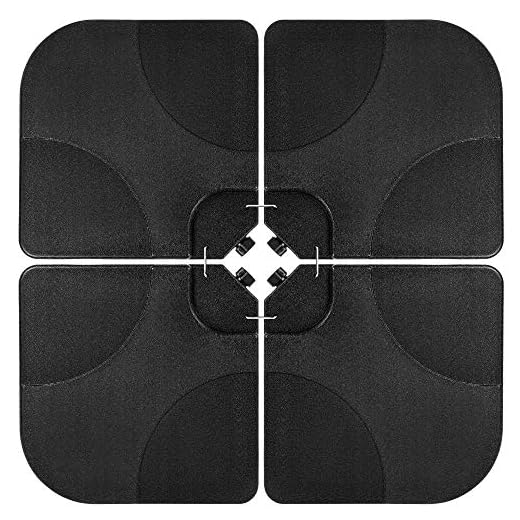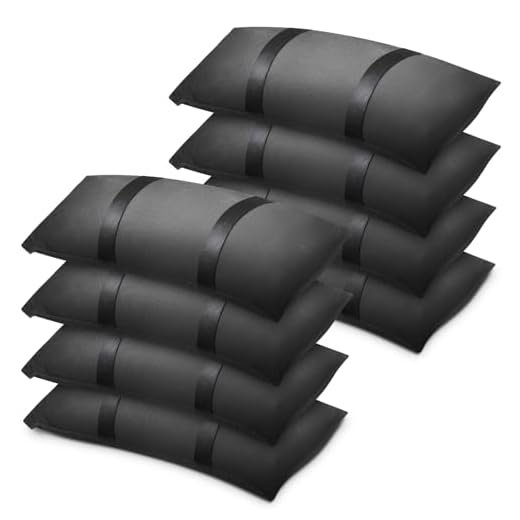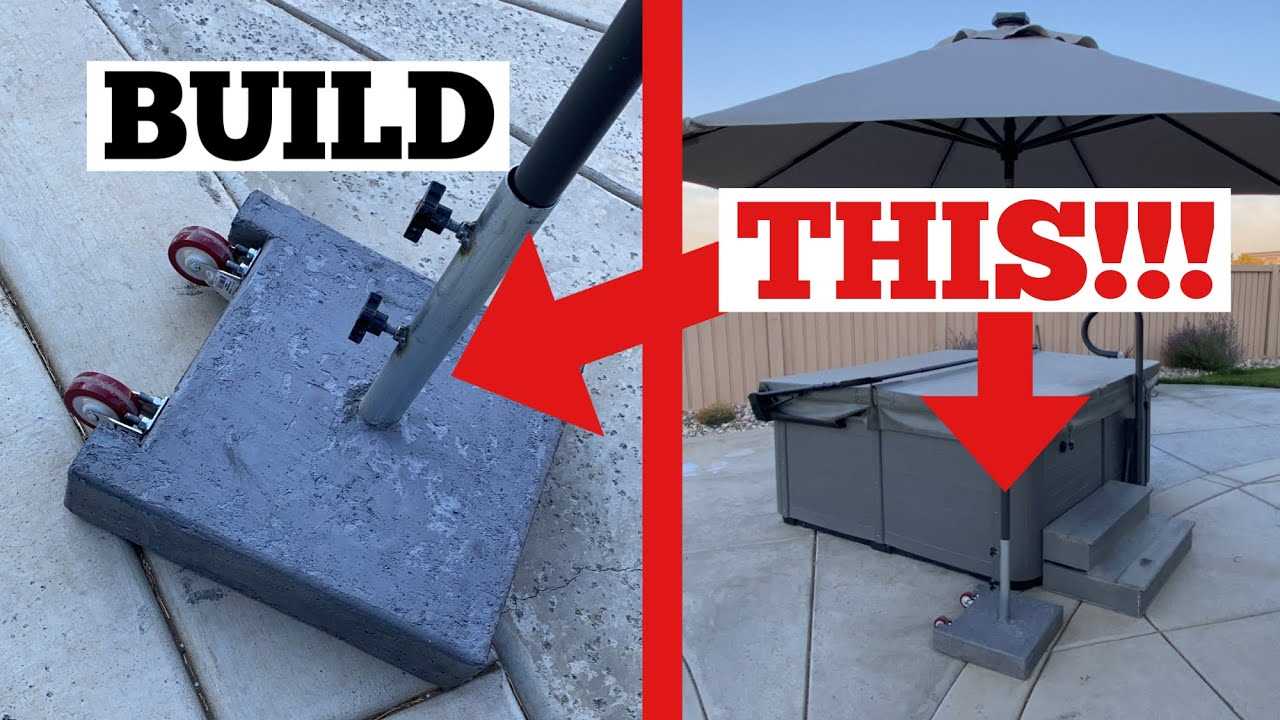




To stabilize your outdoor canopy, consider using weighted bases or sandbags. These options provide the necessary support to keep your fixture upright and steady during breezy conditions.
This article offers practical strategies for anyone looking to enhance the stability of their outdoor shade structure. Whether you’re preparing for a summer gathering or simply enjoying your backyard, keeping your canopy secure is essential for safety and comfort.
We’ll explore various methods, including the use of concrete weights, water-filled bases, and even DIY solutions like bricks or heavy stones. Each approach has its advantages, allowing you to choose the best fit for your specific needs and preferences.
Best Way to Secure a Canopy Structure
Using weights specifically designed for outdoor canopies is one of the most reliable methods for stability. These weights can be filled with sand or water, providing significant support against gusts of wind. It’s important to ensure that the weight is evenly distributed to maintain balance.
Another effective approach involves using a sturdy base. A base made from heavy materials, such as concrete or metal, offers a solid foundation. This option usually requires minimal effort for setup and can be used repeatedly, making it a practical choice for various outdoor gatherings.
Additional Methods for Stability
- Sandbags: Placing sandbags around the structure can enhance stability significantly. They are easy to transport and can be adjusted based on wind conditions.
- Water-Filled Bases: Utilizing bases that can be filled with water provides a simple and effective solution. Ensure that they are securely closed to prevent leaks.
- Weighted Chains: Attaching weighted chains along the edges can help keep the structure grounded during inclement weather.
For a permanent solution, consider embedding the base into the ground. This method requires more effort but provides unmatched stability, especially in areas prone to strong winds.
Regularly checking the condition of the weights and ensuring they are securely attached will prolong their effectiveness. If any wear or damage is observed, replacing them promptly will help maintain safety and functionality.
Choosing the Right Base Material
Selecting an appropriate material for the base of a sunshade is crucial for stability and durability. Common options include concrete, plastic, and metal, each offering unique benefits.
Concrete bases provide excellent weight and stability, making them suitable for windy conditions. They can be heavy and may require additional effort for repositioning. Plastic bases, on the other hand, are lightweight and easy to move, but they may need to be filled with water or sand for added stability. Metal bases are durable and can withstand various weather conditions, but their weight can vary significantly depending on the design.
Material Comparison
| Material | Weight | Durability | Mobility |
|---|---|---|---|
| Concrete | Heavy | High | Low |
| Plastic | Light | Medium | High |
| Metal | Varies | High | Medium |
When choosing a base, consider the environmental factors in your area. If high winds are common, opting for a heavier material can prevent unwanted movement. For those who frequently rearrange outdoor furniture, lightweight options may be more convenient.
Lastly, the aesthetic appeal of the base should complement your outdoor setup. There are various designs available that can match the style of your garden or patio, ensuring functionality does not sacrifice visual appeal.
Exploring Concrete Weights for Stability
Concrete weights provide a reliable solution for securing outdoor shading structures. Their dense composition ensures stability in various weather conditions. By utilizing these weights, one can prevent unintended movement caused by wind or other elements.
One of the primary advantages of concrete is its durability. Unlike other materials, concrete can withstand harsh environments without degrading. This longevity makes it a practical choice for anyone looking to maintain a secure setup throughout the seasons.
Benefits of Using Concrete Weights
- Stability: The weight of concrete effectively anchors structures, minimizing the risk of tipping.
- Weather Resistance: Concrete is impervious to rust and other forms of corrosion, ensuring it remains functional over time.
- Customizable Shapes: Concrete can be molded into various shapes and sizes, providing versatility in design.
When selecting concrete weights, consider the following factors:
- Weight: Heavier weights provide better stability. Assess the expected wind conditions to determine the necessary weight.
- Size: Ensure the weight fits securely around the base of the shading structure.
- Design: Aesthetics can matter. Choose weights that complement the outdoor decor.
In summary, concrete weights offer an effective solution for ensuring the reliability of outdoor shading arrangements. Their combination of durability, stability, and design flexibility makes them an excellent choice for enhancing outdoor enjoyment.
Utilizing Water-Filled Umbrella Bases
Water-filled bases provide a reliable solution for securing outdoor shading devices. These bases are designed to be filled with water, offering substantial weight to prevent tipping and movement during windy conditions.
To effectively use a water-filled base, fill it with clean water, ensuring it reaches the maximum capacity indicated by the manufacturer. This method not only adds stability but also allows for easy adjustments, as the base can be drained and moved when necessary.
Benefits of Water-Filled Bases
- Stability: The weight of water creates a solid foundation that resists strong gusts.
- Portability: These bases can be emptied for transport, making them convenient for seasonal storage.
- Cost-Effective: Generally, they are less expensive compared to concrete or filled sand options.
When selecting a water-filled base, consider the size of the shade structure. Larger canopies require bases with higher capacity to ensure adequate support. Additionally, some bases come with built-in wheels for easy maneuverability.
Maintenance involves checking for leaks and ensuring the water remains clean. This approach not only prolongs the life of the base but also maintains a visually appealing appearance.
Incorporating Sandbags for Added Support
Utilizing sandbags is an effective method to secure outdoor canopies against wind and adverse weather conditions. These bags provide substantial stability and can be easily adjusted or removed as needed. Choosing the right type of sandbag is essential for optimal performance.
Fill the sandbags with clean sand to avoid mess and ensure weight balance. Standard sizes range from 10 to 50 pounds, depending on the height and design of the structure. Placing sandbags at the base of the support poles will create an anchor point that prevents tipping during gusts.
Placement Strategies
Positioning the sandbags correctly can enhance their effectiveness. Here are a few suggestions:
- Place two sandbags on opposite sides of each pole to create stability.
- For larger structures, consider adding an extra sandbag on each corner for additional weight.
- Ensure the sandbags are secured tightly to the poles using straps or ropes to prevent them from shifting.
Regularly check the sandbags for wear and tear, as prolonged exposure to elements can degrade the material. Replacing worn-out bags will maintain the integrity of your setup.
Sandbags not only enhance safety but can also be aesthetically pleasing. Opt for bags with decorative covers that blend seamlessly with your outdoor decor, adding functionality without compromising style.
DIY Solutions for Custom Weights
Creating custom weights for your outdoor shade structure can be both cost-effective and rewarding. Utilizing materials from around your home or local hardware store allows for a personalized approach to stability. Consider using concrete, sandbags, or even water-filled containers as potential options.
Concrete blocks offer a robust solution. You can purchase them at any building supply store. Simply stack a few blocks and secure them together with a sturdy strap or rope. This method not only provides weight but also adds a decorative element if painted or covered with a fabric.
Alternative Materials
Sandbags are another practical choice. Fill heavy-duty bags with sand and place them at the base of your shade structure. This method is flexible, as you can easily adjust the amount of sand to achieve the desired weight.
Water-filled containers serve as a temporary solution. Use large buckets or jugs, filling them with water for added stability. They can be emptied and stored away when not in use, making them a convenient option.
- Concrete Blocks: Stack and secure for a permanent weight.
- Sandbags: Adjustable and easy to store.
- Water Containers: Temporary and flexible solution.
For added aesthetic appeal, consider wrapping your weights in decorative fabric or painting them to match your outdoor decor. This not only enhances the visual aspect but also integrates the weights seamlessly into your outdoor setting.
Experimenting with different materials can lead to innovative solutions that suit your personal style and functional needs. Always ensure that the chosen weights are secure and stable to prevent any accidents.
Understanding the Importance of Weight Distribution
Proper weight distribution is fundamental for maintaining stability in outdoor shading structures. The balance of weight around the base is critical, as it directly influences how well the apparatus can withstand wind and other environmental factors.
When the center of gravity is low and evenly distributed, the structure remains grounded, reducing the risk of tipping over. Uneven weight can lead to dangerous situations, especially in windy conditions. Thus, selecting the right materials and methods for securing these structures enhances safety and longevity.
Factors Influencing Weight Distribution
Several elements contribute to effective weight management. The design of the base plays a significant role, and choosing the appropriate shape and size can enhance stability. Materials also matter; heavier options provide more security, while lighter ones may require additional support.
- Base Design: A wide and heavy base offers better support than a narrow one.
- Material Selection: Concrete or metal bases are preferable for stability.
- Weight Placement: Distributing weight evenly prevents tipping.
It is beneficial to regularly assess the conditions surrounding the shading structure. Keeping the area clear of debris and ensuring the base remains intact can enhance the overall performance.
Understanding how weight is distributed allows for better decision-making regarding the choice of materials and design, ultimately leading to a safer and more reliable setup.
Seasonal Maintenance and Weight Adjustments
Regular maintenance is key to ensuring the stability of your shade structure throughout the year. During seasonal transitions, it’s important to assess and modify the weight used to secure your canopy. This prevents any potential accidents caused by strong winds or shifting weather conditions.
At the beginning of each season, inspect the stability of the base and adjust the ballast as necessary. Consider the following steps for optimal support:
- Check for any water accumulation in the base; empty if needed.
- Ensure that the weight is evenly distributed around the structure.
- Consider adding additional weights or sandbags during windy months.
- Inspect for rust or damage to the base components and replace if necessary.
Proper weight management not only prolongs the lifespan of your shade structure but also enhances safety for you and your guests. Following these seasonal maintenance tips will ensure a secure and enjoyable outdoor experience.
Best way to weigh down a patio umbrella
Features
| Part Number | YT-00102670 |
| Model | YT-00102670G |
| Color | Black |
| Size | 41×41×3in |
Features
| Part Number | FUB41B |
| Model | FUB41B |
| Color | Black |
| Release Date | 2023-12-22T00:00:01Z |
Features
| Part Number | SKY3257 |
| Model | SKY3257 |
| Color | Black |
| Size | 4-Piece |
Features
| Part Number | BLUS-15 |
| Model | BLUS-15 |
| Color | Black |
| Size | 8 X 50 lbs |
Video:
FAQ:
What are the best materials to use for weighing down a patio umbrella?
When it comes to weighing down a patio umbrella, several materials can be effective. Common options include sand, water, concrete, and specially designed umbrella weights. Sand and water are popular choices because they can easily fill bases and provide substantial weight. Concrete offers a more permanent solution, often used in heavier bases that can be set in place. Additionally, many manufacturers offer umbrella weights made of metal or plastic that can be filled with sand or water, which are convenient and easy to handle. Ultimately, the choice depends on the type of umbrella and the desired level of stability.
How do I properly secure my patio umbrella to prevent it from tipping over?
To secure your patio umbrella effectively, start by choosing a sturdy base that is appropriate for the size and height of your umbrella. Ensure that the base is heavy enough to withstand wind and other elements. If your umbrella is freestanding, consider adding additional weights or sandbags around the base for extra stability. It’s also wise to position the umbrella in a location that is sheltered from strong winds. When not in use, especially during storms or high winds, it’s best to close the umbrella to prevent it from tipping or being damaged. Regularly checking the tightness of the umbrella’s connection to the base can help maintain stability as well.






